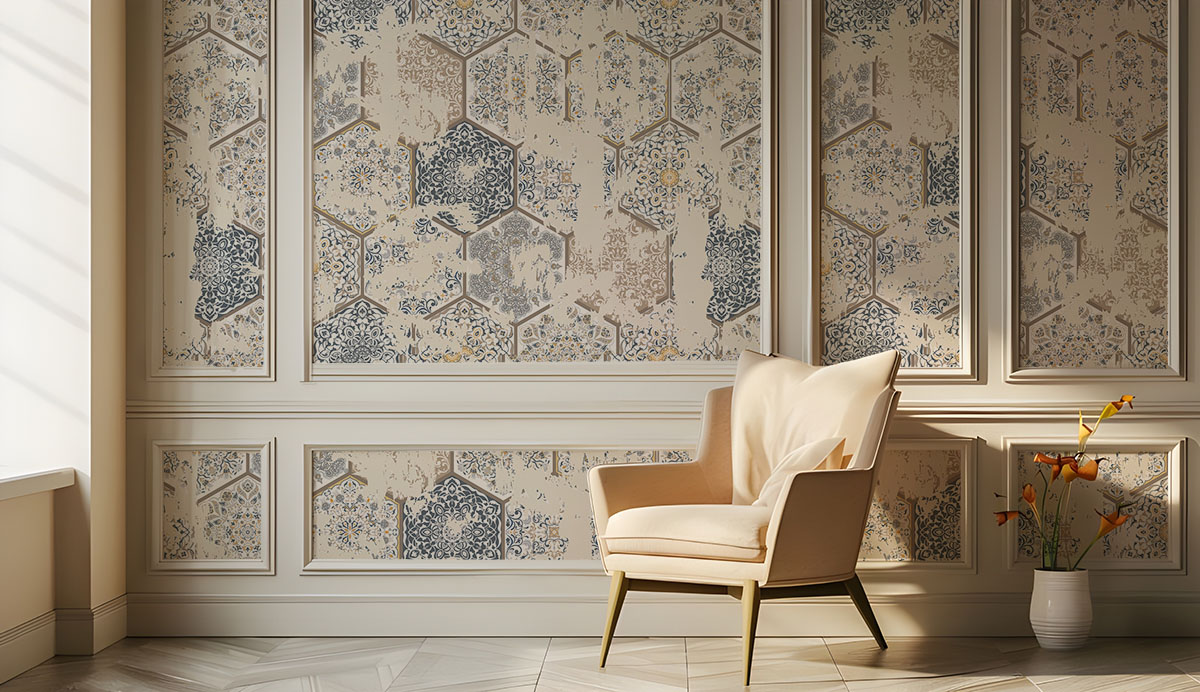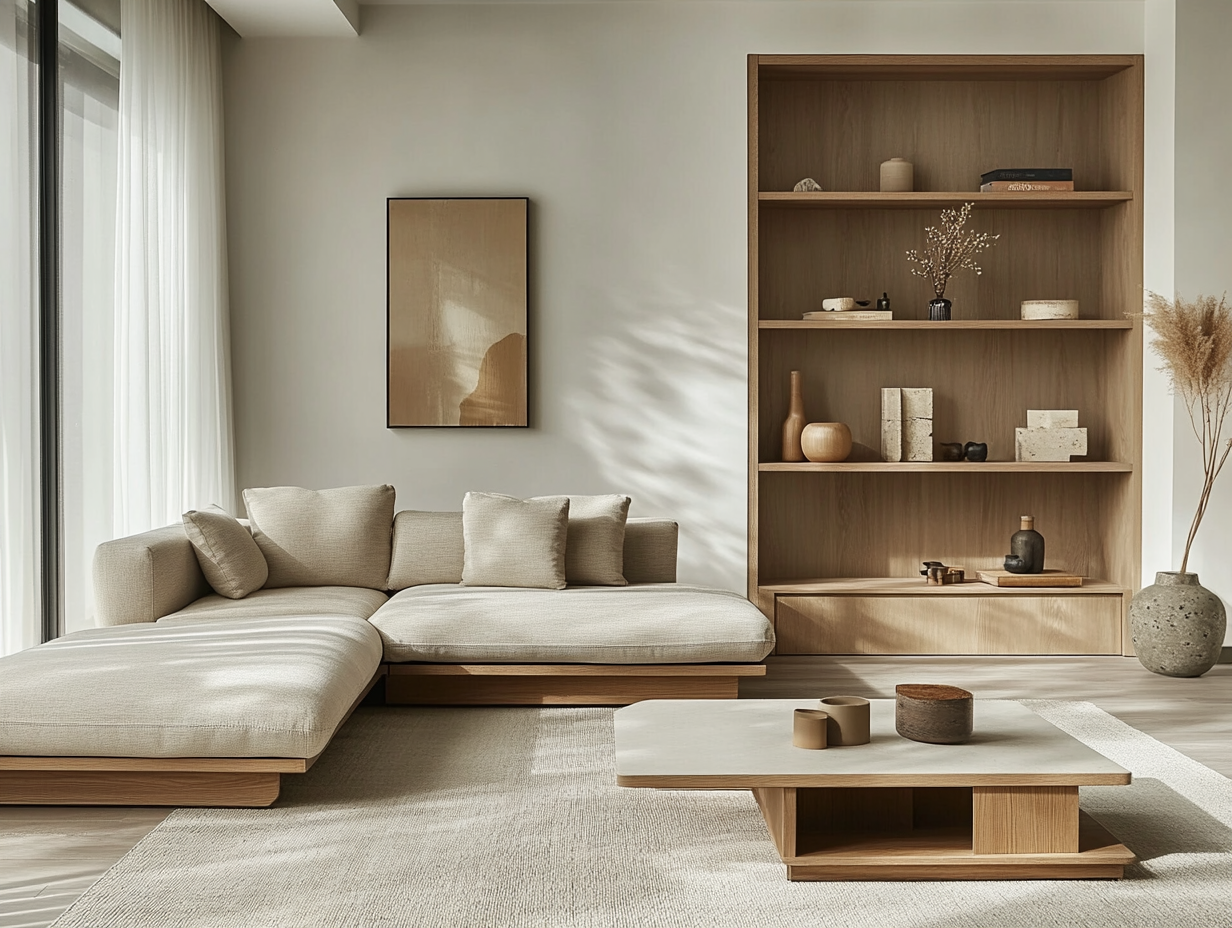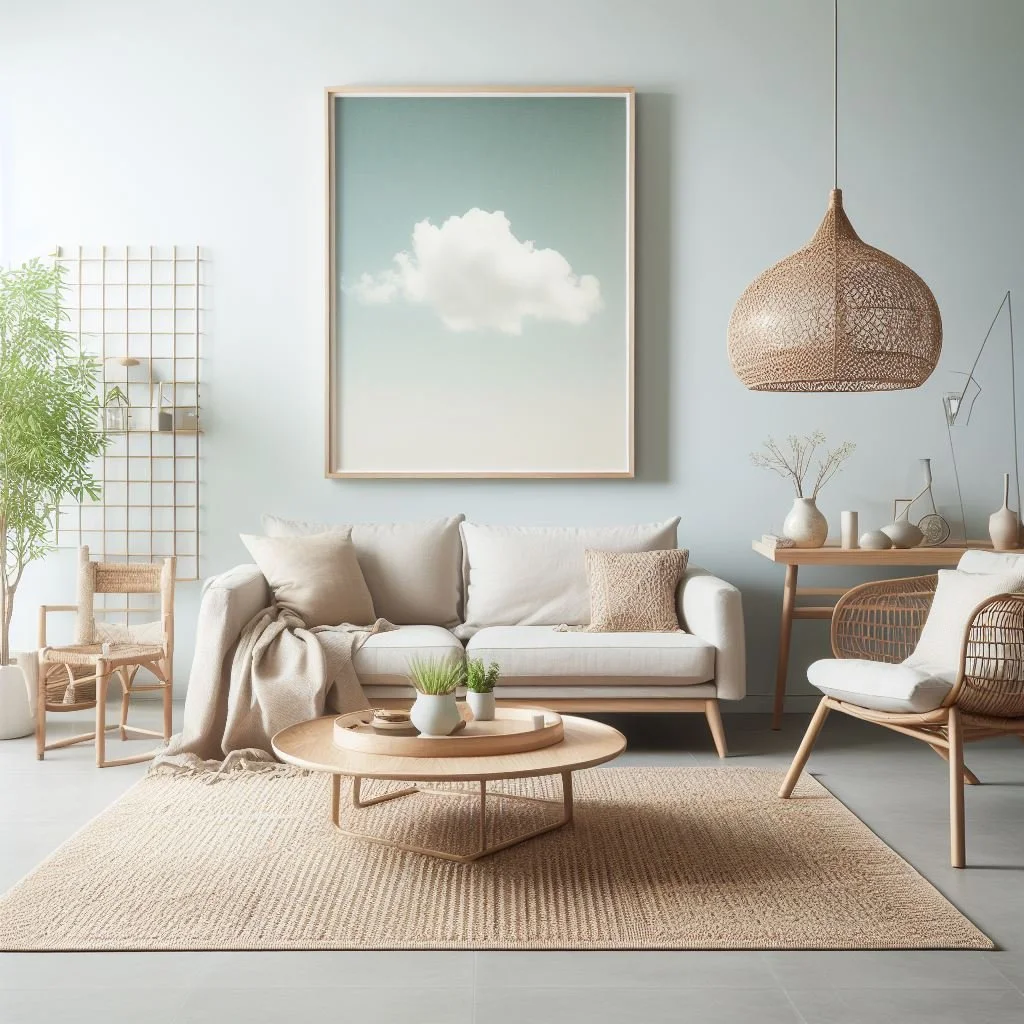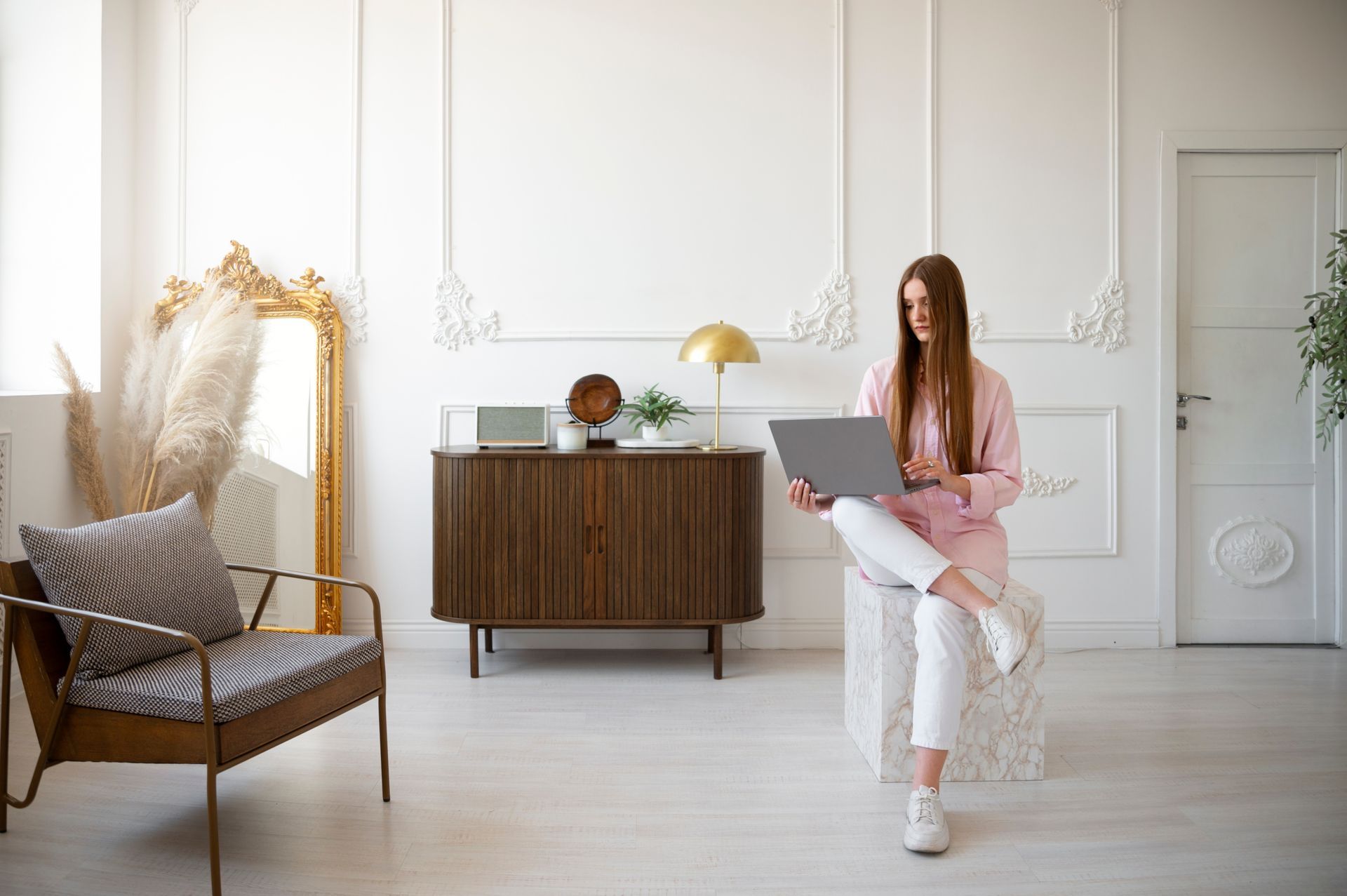How minimalist lighting can transform the perception of space and order in interior environments

Illuminating Spaces with Minimalism
The right lighting can drastically alter how we perceive a space in our homes or workplaces. Minimalist lighting, with its emphasis on simplicity and functionality, serves not just to illuminate but to redefine spaces in striking and innovative ways. By focusing on key principles rooted in minimalist design, one can foster an environment that feels both spacious and organized, transforming ordinary areas into extraordinary experiences.
Key Benefits of Minimalist Lighting
- Enhances Aesthetics: Clean lines and understated designs in lighting fixtures contribute to a more cohesive look throughout a room. For instance, a sleek pendant light can serve as a focal point without overpowering the decor, maintaining visual harmony.
- Improves Spatial Awareness: Thoughtful placement of minimalist lighting can create illusions of height and width in a room. Recessed lighting, strategically embedded in ceilings, helps elongate walls while providing even illumination that lifts the ambiance. This technique can make lower ceilings appear taller and narrow rooms feel wider.
- Promotes Order: Minimalist lighting reduces clutter by emphasizing essential lighting needs. Fixtures with multiple functionalities, such as a wall-mounted lamp that also acts as a shelf, keep surfaces clear and unobstructed. This approach not only nurtures a clean aesthetic but also promotes mental clarity, as a tidy environment can foster better focus and relaxation.
For many homeowners and designers across the United States, incorporating minimalist lighting can be a game-changer in interior design. Imagine utilizing fixtures that double as works of art, providing needed illumination while ensuring every corner of your room is well-lit without overwhelming your senses. Artists like Olafur Eliasson have taken minimalist lighting to another level by creating installations that challenge perceptions of space and engage viewers on a deeper level.
As trends evolve in design, the allure of minimalism remains strong. It’s not just about reducing light; it’s about enhancing the overall experience one has in a space. Discover how minimalist lighting transcends traditional decor and instills a sense of peace and clarity in your surroundings. The ability of light to shape mood, functionality, and aesthetics is unarguable; thus, embracing minimalist principles may lead to a refreshing transformation in how we interact with our environments.
Ultimately, the journey into minimalist lighting is an invitation to explore how simplicity can yield sophistication. From LED strips discreetly illuminating dark cabinets to adjustable track lights that highlight artwork, the potential for creativity is limitless. The challenge lies not in what to include but what to exclude, allowing each light fixture to speak for itself in the larger narrative of your living space.
DISCOVER MORE: Click here to learn how minimalism can enhance your daily life

The Art of Subtle Illumination
Minimalist lighting not only offers utility but also plays a crucial role in shaping the atmosphere of a space. When integrated thoughtfully, these fixtures can meld function with form, creating environments that resonate with calmness and clarity. Picture a quaint studio apartment where the walls are washed with soft, diffused light from an unadorned fixture. Here, lighting transcends merely serving its purpose; it becomes a design element that heightens sensory experiences while maintaining an organized feel.
Creating Illusions with Light
One of the most profound aspects of minimalist lighting is its ability to alter spatial perception. Through intentional placement and the use of various light sources, minimalist designs can manipulate how we view dimensions within a room. When aiming to create a sense of openness, homeowners and designers alike can achieve remarkable results using these techniques:
- Layering Light: Combining ambient, task, and accent lighting strategically creates depth within a space. For instance, using recessed lights to wash walls while employing pendant lights for reading areas conjures an environment that feels both inviting and spacious.
- Color Temperature Manipulation: Light color can significantly affect mood and perception. Warm light tones create a cozy atmosphere, while cooler tones can energize and stimulate a space. By selecting the right temperature for different areas, one can accentuate openness or intimacy as needed.
- Shadow Play: Minimalist lighting allows for the thoughtful use of shadows to enhance features of the room. By positioning light to cast interesting shadows, one can create intriguing focal points while also making a space feel larger through visual contrast.
Moreover, minimalist lighting can transform a cluttered area into a serene oasis by focusing on clean lines and unembellished designs. Fixtures such as geometric wall sconces or streamlined floor lamps not only serve as sources of light but also uphold an aura of sophistication. These designs emphasize order and simplicity, aligning perfectly with the minimalist philosophy that less is indeed more. By reducing decorative elements in luminaires, the eye is drawn to the essence of the space rather than the distractions.
As awareness of the mental health benefits of organized and aesthetically pleasing environments grows, more individuals in the United States are turning to minimalist lighting solutions. These lighting choices contribute not only to aesthetic enjoyment but also to fostering a sense of calm and productivity. Minimalist lighting helps declutter our surroundings, allowing us to focus on what truly matters and enhancing our everyday experiences.
In essence, minimalist lighting serves as a transformative tool that brings order and a renewed sense of spaciousness to any interior environment. By embracing this design philosophy, one can unlock endless possibilities for creating harmonious and refined living spaces.
Maximizing Space Perception Through Minimalist Lighting
In contemporary interior design, the use of minimalist lighting has emerged as a powerful tool for enhancing the perception of space and order. By utilizing simple fixtures and strategic placement, homeowners and designers can achieve a visually larger and more open environment. For instance, pendant lights hung from high ceilings can draw the eye upward, creating an illusion of increased height in a room. Furthermore, light colors such as whites and pastels can reflect more light, making spaces appear airy and expansive.
Creating Order Through Lighting Design
In addition to spatial perception, minimalist lighting plays a crucial role in establishing order within a room. Layered lighting techniques, which incorporate ambient, task, and accent lighting, allow for a harmonious flow that guides the eye through a space while minimizing visual clutter. For example, integrating recessed lighting can provide seamless illumination without overshadowing design elements. This deliberate approach to lighting helps maintain a sense of clarity and focus, which is vital in contemporary living areas.
Psychological Impact of Minimalist Lighting
Moreover, the psychological effects of lighting cannot be overlooked. Research has shown that well-lit spaces contribute to improved mood and productivity. In workplaces or home offices, employing natural light or light fixtures that mimic it can lead to increased energy and motivation. The calming effects of soft lighting in living areas can foster relaxation and reduce stress levels. Embracing a minimalist lighting approach not only enhances the visual aspects of a space but also significantly influences the emotional experiences of its occupants.
Adapting Minimalist Lighting to Personal Style
Personalization is key when integrating minimalist lighting into home decor. Whether opting for sleek, modern fixtures or vintage-inspired designs, there’s a myriad of choices that can align with individual aesthetics. Moreover, customizable smart lighting systems allow homeowners to adjust brightness and color temperature to match their daily rhythms or specific occasions, promoting adaptability while upholding the minimalist ethos.
| Category | Advantages |
|---|---|
| Spatial Perception | Minimalist lighting enhances the visual scale of interiors, making spaces feel larger and more open. |
| Order and Clarity | Using layered lighting creates a calm environment, reducing clutter while focusing on key design elements. |
This exploration of minimalist lighting reveals its capacity to transform both the aesthetic and practical aspects of interior environments. By embracing simplicity in lighting design, one can maximize the perception of space and order, ultimately shaping a more inviting and efficient home.
DISCOVER MORE: Click here to enhance your productivity
Illuminating Functionality and Form
As minimalist lighting takes center stage in modern interior design, its association with functionality becomes increasingly prominent. Instead of superfluous embellishments, minimalist lighting emphasizes the synergy of purpose and aesthetic appeal. By focusing on the essential elements of light, designers can craft spaces that are not only visually striking but also practical for everyday living. For instance, consider a home office where a streamlined desk lamp integrates seamlessly with its surroundings. The minimalist design eliminates visual distractions while providing sufficient task lighting, thereby enhancing productivity and focus.
The Role of Natural Light
Integrating minimalist lighting also involves maximizing the potential of natural light. With the right fixtures, translucent materials and large windows can be harmonized to create a seamless flow between indoor and outdoor environments. This approach not only transcends mere illumination but also enhances our perception of space by establishing a connection with the outside world. Large skylights or strategically placed mirrors can reflect and diffuse natural light, augmenting a room’s brightness and giving the illusion of a more expansive area.
In the context of open-plan living spaces, such as those often found in American urban apartments, minimalist lighting fixtures like suspended LED strips or wall-mounted fixtures work wonders in delineating different areas without the need for cumbersome physical barriers. They provide gentle guidance through illumination, allowing distinct zones—such as the living area, dining space, and kitchen—to coexist in harmony, reinforcing an organized layout.
Psychological Effects of Lighting
Furthermore, the psychological effects of lighting cannot be overlooked in the conversation about space perception. Research has shown that lighting significantly impacts our moods and cognitive functions. A study published in the Journal of Environmental Psychology indicates that environments illuminated with soft, ambient lighting can improve concentration and reduce stress levels. In homes where individuals seek tranquility, such as meditation or relaxation rooms, the inclusion of minimalist lighting can create an inviting atmosphere, thereby enhancing the overall experience.
Moreover, the choice of lighting fixtures can evoke feelings of calmness or energy depending on design. An intricately designed chandelier may serve as a bold statement piece but can convolute the open feel of a space. In contrast, a simple yet elegantly designed pendant light can become a subtle focal point that attracts the eye without overwhelming the room. This focus on simple forms and purposeful lighting facilitates a sense of order, allowing individuals to navigate their environments with ease.
Sustainable Practices in minimalist lighting also lend additional depth to its appeal. With the growing importance of eco-friendly design, many minimalist fixtures utilize energy-efficient technologies such as LED lighting. These options create a similar aesthetic while significantly reducing energy consumption. By choosing sustainable lighting solutions, homeowners not only contribute to environmental responsibility but also experience enhanced savings on utility bills—an outcome that aligns perfectly with the minimalist lifestyle.
Incorporating minimalist lighting into interior environments ultimately offers a pathway to transforming the way we perceive space and order. By embracing the principles of minimalism, individuals can furnish their living spaces with intentionality, creating an ambiance that fosters creativity, productivity, and serenity.
DISCOVER MORE: Click here to learn about the influence of minimalism on interior design</a
Reimagining Spaces Through Minimalist Lighting
The incorporation of minimalist lighting into interior design serves as a profound catalyst for transforming the perception of space and order. By prioritizing functional simplicity and elegant design, homeowners can create environments that not only appear larger and more organized but also promote a sense of tranquility and focus. This transformation is particularly beneficial in a fast-paced society, where psychological well-being is increasingly intertwined with our surroundings.
As explored, the strategic use of natural light in tandem with minimalist lighting fixtures can dissolve barriers within living spaces, facilitating a seamless connection between indoors and outdoors. This harmonious blend of light not only enriches spatial experiences but also enhances our overall awareness of the environment. In urban settings, where space is often at a premium, such approaches can redefine how we interact with our homes.
Moreover, the psychological benefits derived from carefully curated lighting cannot be overstated. The potential to enhance mood, reduce stress, and boost productivity through thoughtful illumination represents a significant argument for adopting minimalist principles. By choosing energy-efficient solutions, consumers also align themselves with sustainable practices, ensuring that their home environments are both aesthetically pleasing and environmentally responsible.
Ultimately, embracing minimalist lighting is more than a design trend—it’s a lifestyle choice that encourages intentionality and clarity. As we navigate our daily lives, the environments we inhabit can profoundly influence our experiences. Therefore, by prioritizing minimalist lighting, we can foster a sense of order and elevate our perceptions of space, paving the way for more mindful living.


